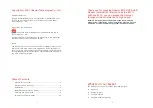
46
6195-2201
SM from the same <oa>.
MTI: Message Type Indicator
b1=0 & b0=0 -> SMS-DELIVER (in the direction SC to MS)
b1=0 & b0=1 -> SMS-SUBMIT (in the direction MS to SC)
In text mode <vp> is only coded in ”relative” format. The default value is 167 (24 hours).
This means that one octet can describe different values:
VP value
Validity period value
0 to 143
(VP + 1) x 5 minutes (up to 12 hours)
144 to 167
12 hours + ((VP - 143) x 30 minutes)
168 to 196
(VP - 166) x 1 day
197 to 255
(VP - 192) x 1 week
<pid> is used to indicate the higher layer protocol being used or indicates interworking
with a certain type of telematic device. For example, 0x22 is for group 3 telefax, 0x24 is
for voice telephone, 0x25 is for ERMES.
<dcs> is used to determine the way the information is encoded. UCS2 alphabet and com-
pressed text are not supported. Only GSM default alphabet and 8 bit data are supported.
Application to GSM
AT+CSMP?
Current values
GSM to application
+CSMP: 0,0,0,0
No validity period
OK
<dcs>= PCCP437 alphabet
(8 bits -> 7 bits)
Application to GSM
AT+CSMP=17,23,64,244
<vp> = 23 (2 hours, relative
format) <dcs> = GSM 8 bits
alphabet
GSM to application
OK
Command correct
+CMGD – Delete message
This command shall be used after a read-command in order to delete the any stored
message.
For example:
GSM to application
+CMTI: ”SM”,3
New message received
Application to GSM
AT+CMGR=3 Read it
GSM to application
+CMGR: ”REC UNREAD”,
Unread message
”0146290800”,,”98/10/01,
received from 0146290800
18:19:20+0
on the 01/10/1998 at 18H
0” <CR><LF>
19m 20s
Received Message!
OK
Application to GSM
AT+CMGD=3
Delete it
GSM to application
OK
Message deleted
Summary of Contents for GS-01
Page 55: ......











































